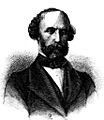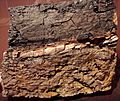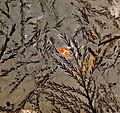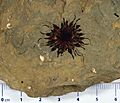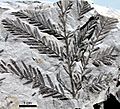Paleocene facts for kids
The Palaeocene was the first part of a time period called the Palaeogene. It started right after the Cretaceous period, which is when the dinosaurs disappeared. This epoch lasted for about 10 million years, from about 66 to 56 million years ago. It was followed by the Eocene epoch.
The Palaeocene began with a huge event called the K/T extinction event. This was caused by a giant meteorite hitting Earth (leaving the Chicxulub crater) and massive volcanic eruptions in what is now India (the Deccan Traps). This event wiped out many animal groups, including the dinosaurs and many other reptiles.
The epoch ended with another big change called the Palaeocene–Eocene Thermal Maximum. During this time, the deep parts of the ocean lost most of their oxygen. This meant that many deep-sea creatures, like tiny foraminifera, could not survive. This period also saw big changes in the types of mammals living on land.
Climate and Environment
After a slightly cooler start, the Earth's climate became much warmer during the Palaeocene. It was far warmer than it is today. The world was covered in thick forests. There were no ice caps at the North or South Poles.
Warm seas flowed all around the world, even near the poles. At first, there wasn't much variety of sea life. But later in the epoch, the warm, tropical conditions led to lots of different marine animals, including coral reefs. With the large marine reptiles gone from the end of the Cretaceous, sharks became the main hunters in the oceans.
Life on Land
After the dinosaurs disappeared, mammals began to grow in size and variety. They started to fill the empty spaces left by the extinct reptiles. Many new types of mammals appeared during the Palaeocene. These early mammals were often smaller than modern ones, but they were quickly evolving.
Some scientists have found a hadrosaur leg bone in rocks from the early Palaeocene in New Mexico. This suggests that some non-bird dinosaurs might have survived for a short time after the main extinction event. However, it's also possible that this fossil was moved from older rocks into newer ones by erosion.
Stages of the Palaeocene
The Palaeocene is divided into three main stages:
| Stage | Time million years ago |
|---|---|
| Thanetian | 59.2 – 56 |
| Selandian | 61.6 – 59.2 |
| Danian | 66 – 61.6 |
Images for kids
-
Gastornis, a large flightless bird from the Palaeocene
-
A look at a Patagonian landscape during the Danian stage
-
Reconstruction of the late Paleocene Ginkgo cranei tree
-
The conifer Glyptostrobus europaeus from Canada
-
Fossil Platanus fruit from Canada
-
Gastornis restoration
-
Borealosuchus, an ancient crocodile, at the Field Museum of Natural History
-
An earwig fossil from the late Paleocene in Denmark
See also
 In Spanish: Paleoceno para niños
In Spanish: Paleoceno para niños





